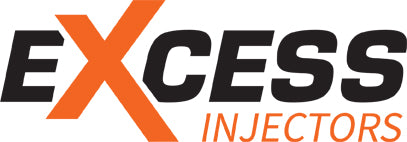What's in this article
Direct fuel injection (DFI) is the latest fuel delivery system where fuel is injected directly into the combustion chamber of the engine's cylinders. Unlike port fuel injection where fuel is sprayed into the intake ports before entering the combustion chamber, DFI gives more precise and efficient fuel delivery. This system improves combustion efficiency, performance and reduces emissions - it's a game changer in modern automotive engineering.
If your car is only a few years old, chances are it's already got a direct injection engine. But how does this technology work and why is it so popular? Let's take a look.
How does direct fuel injection work?
Direct fuel injection uses high pressure injectors that spray fuel directly into the combustion chamber of each cylinder. Here's how direct fuel injection works:
- Fuel pressurization: A high pressure fuel pump pressurizes the fuel so it's delivered at the right pressure and volume.
- Timing: The injectors spray fuel into the combustion chamber at the right moment, depending on the engine's needs (e.g. during acceleration or cruising).
- Atomization: The fuel is atomized into a mist so it can mix with air for optimal combustion.
This gives more controlled fuel delivery resulting to better performance and efficiency.
Advantages of direct fuel injection
Direct fuel injection systems has several advantages that's why many manufacturers and drivers prefer it.
1. Better fuel efficiency
By injecting fuel directly into the combustion chamber, DFI eliminates waste and ensures precise fuel usage. This results to better fuel economy compared to older systems like carburetors or port injection.
2. Better engine performance
Because the fuel is atomized and delivered at high pressure, combustion is more efficient. This means more power output so your engine is more responsive and can deliver better performance on demand.
3. Less emissions
DFI has better combustion control, reduces emissions production. This makes direct injection engines more eco-friendly and helps manufacturers meet stricter emissions standards.
How does direct injection compare to other fuel systems?
Direct injection vs. port injection
Port fuel injection systems spray fuel into the intake ports where it mixes with air before entering the combustion chamber. Direct injection delivers fuel straight into the chamber. Here's the comparison:
FeatureDirect InjectionPort InjectionFuel EfficiencyHigherModeratePower OutputHigherLowerEmissionsLowerHigherMaintenance RequirementsHigher (carbon buildup)Lower
Direct fuel injection applications
Automotive
DFI is now standard in many modern cars including Toyota, BMW and Ford. It's used in both gasoline and diesel engines for a balance of performance and fuel economy.
Other engine types
Beyond cars, direct injection is also used in marine engines, motorcycles and even aircraft. It's versatile and can be used in many applications.
Disadvantages of direct fuel injection
While DFI has many benefits, it's not without its problems.
1. Carbon buildup on intake valves
One of the problems of DFI is carbon buildup on intake valves. Unlike port injection where fuel passes over the valves and helps clean them, direct injection doesn't have this cleaning effect. Over time this can cause performance issues if not maintained properly.
2. Higher costs
DFI systems requires high pressure fuel pumps and heavy duty injectors which can increase manufacturing and repair costs. Maintaining a DFI engine may require specialized services to prevent carbon buildup.
The future of direct fuel injection
DFI is evolving fast, manufacturers are working to address its limitations.
DFI technology advancements
Research is improving DFI efficiency and durability including the development of materials that resists carbon buildup.
Hybrid engines
Manufacturers are combining DFI with hybrid technology, creating engines that’s even more efficient and cleaner. These hybrid systems is the future of the automotive industry.
How to maintain DFI engine
To keep your DFI engine running smoothly:
- Use full synthetic oil: Synthetic oil resists breakdown and minimizes carbon buildup.
- Regular induction services: Clean the intake valves and throttle body every 16 months or 20,000 miles to prevent carbon deposits.
- Follow manufacturer guidelines: Stick to the recommended service intervals to achieve optimal performance.
Take care of your DFI engine
DFI is changing engine performance but it requires proper maintenance to give you long term benefits. If you want to keep your car running efficient or need help with your DFI engine, contact us or shop our fuel injectors by vehicle make below.
 1800 615 6344
1800 615 6344
 My Account
My Account
 Trade Application
Trade Application



